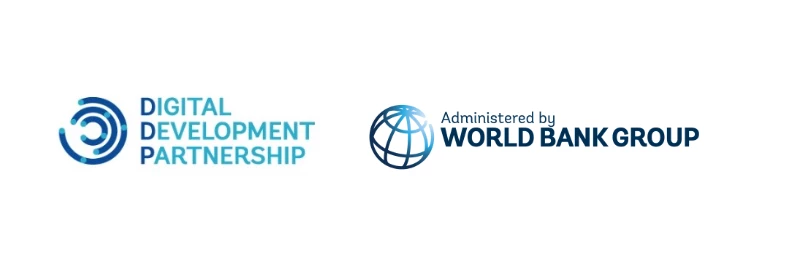This blog is from a series on digital safeguards and enablers for COVID-19 vaccine delivery.
Digital technologies, including mobile technologies, are facilitating every stage of the vaccine supply chain, from planning, through delivery and post vaccination monitoring. A recent study found that a robust data infrastructure helps local authorities identify priority groups, send invitations, and arrange transport for those who may need assistance. The advantages of digital solutions are even more clear in the last mile vaccine delivery: they enable people to access information about the national and local vaccine campaigns, check eligibility, register for vaccination, and schedule follow-up appointments whilst minimizing human interaction throughout the process. Indeed, online systems, e-mail, and mobile applications are the predominant way that countries are distributing vaccines to their citizens.
In countries where the vaccine campaigns have already begun, we are seeing that the digital divide, if unaddressed, has a risk of widening the vaccine divide, potentially leading to negative health outcomes. The availability and access to high-speed internet and devices such as computers and smartphones as well as one’s ability to navigate the web play a crucial role in accelerating COVID-19 vaccine delivery in some countries.
The digital divide is universal and multifaceted
The relationship between the digital divide and unequal vaccine distribution is exacerbated in developing countries where digital disparities are wider and more varied. According to the International Telecommunications Union (ITU), only 28% of the rural households in developing countries had access to the internet in 2019 (65% in urban areas) compared with 81% in developed countries (87% in urban areas).
The gender gap in access to the internet remains large as well: In developing countries 40% of women and 49% of men used the internet in 2019, compared to 86% and 88% in developed countries. In LDCs, this gap is even wider: only 15% of women and 28% of men used the internet in 2019.
Source: Measuring digital development: Facts and figures, ITU
Digital connectivity is key to ensuring that nobody is left behind in COVID-19 vaccine delivery efforts. As the immediate first step, countries embarking on the vaccine rollout should assess the connectivity needs in health clinics, schools and other community facilities that will house, manage, and distribute vaccines to the local population. Governments, in partnership with private sector operators, should consider a range of policy options to expands broadband access and capacity like a temporary release of frequency spectrum and a review of the rules governing the use of Universal Service Fund (USF) to address connectivity gaps particularly in rural communities.
Closing the gap
Implement rapid connectivity solutions for key facilities and community centers
In the areas where physical infrastructure and terrestrial networks are not readily available, government and local authorities can consider innovative measures to provide broadband connectivity. For example, Avanti Communications Group, in partnership with the Kenyan Education Ministry and the UK Department for International Development (DFID), is providing satellite broadband connectivity to 245 rural and remote schools for more than 180,000 children, thereby enabling e-learning through iMlango Initiative. Similarly, in the wake of the COVID-19 outbreak, the World Bank has provided free Wi-Fi connectivity to 30 critical public institutions, including hospitals and schools by purchasing bandwidth capacity and equipment for Wi-Fi hotspots through the ongoing Digital Malawi project. By adopting such connectivity solutions, among other technology solutions that can generate rapid impact, health clinics and facilities can be a central hub for vaccine delivery and serve as community networks in the future.
Provide measures to temporarily subsidize/address affordability of data and devices
In addition, it is also necessary to address the internet usage gap by connecting those who are currently offline to internet-capable devices, such as phones, tablets, and computers, and making the cost of the internet more affordable. Increased availability of digital connectivity can only enable people to obtain information about vaccination and schedule appointments when people can actually use the internet. Governments and local authorities, in partnership with mobile network operators, can consider providing subsidies or offering loans for purchasing devices. By way of an example, the U.S. Federal Communications Commission (FCC) recently introduced Emergency Broadband Benefit Program to provide a monthly subsidy for broadband services as well as a discount on purchasing a device. As another example, at the outset of the COVID-19 outbreak, many operators and governments around the world, including Ghana, Djibouti, and South Africa, zero-rated — or making free of charge for certain services and conditions — access to educational platforms and websites to ensure the continuity of learning. The zero-rating service could be applicable to the COVID-19 vaccine delivery as well with free access to relevant websites.
Beyond the emergency response for equitable COVID-19 vaccine delivery, countries can leverage this opportunity to strengthen the key underlying pillars of digital economy, including digital infrastructure and digital skills, forging resilience to future shocks. A strong foundation of the broadband ecosystem and digital infrastructure brings transformative benefits across various sectors and applications, such as telehealth, online learning, digital government systems and e-commerce. In the meantime, it is also necessary to make progress toward digital equality within a country between different age groups, genders, and urban-rural communities, among others. To this end, investment in digital skills and literacy is an essential part of efforts to expand broadband access and usage.
This work is supported by the Digital Development Partnership, administered by the World Bank. For more information on how you can receive assistance with these topics, please contact Digital4Vaccines@worldbankgroup.org





Join the Conversation